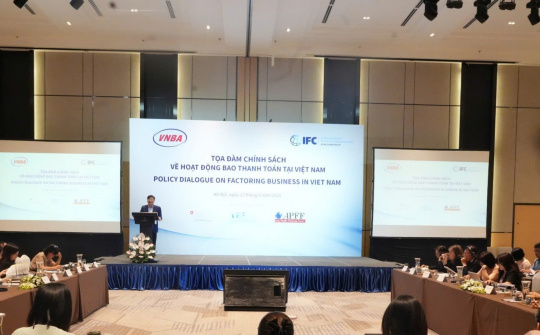
Le Nhan Tam, chief technology officer Microsoft Vietnam
AI, including both traditional AI and GenAI, brings numerous benefits to the banking industry. It helps banks enhance performance and optimise costs by automating processes and efficiently analysing data, allowing banks to make accurate and timely business decisions.
It also helps improve customer experience by providing personalised services based on consumer behaviour analysis and transaction history. Additionally, AI plays a crucial role in detecting and preventing fraud, safeguarding the financial security of customers and banks.
FWD Group was among the early adopters of GenAI in Hong Kong, leveraging data analytics and AI to streamline processes and enhance efficiency across the insurance journey, including sales, underwriting, claims, actuarial, finance, and more. OCBC, Singapore’s second-biggest bank by assets, has rolled out a GenAI chatbot to help boost productivity for more than 30,000 global employees. The results speak volumes, with an impressive 72 per cent reporting significant improvements in day-to-day productivity.
However, deployment in terms of timing and manner remains a challenge for many financial institutions in Vietnam. While some hesitate to adopt it too early, others are uncertain about the capabilities it might offer or worry that they lack the appropriate.
We advise our clients to adhere to the 3P model: people, process, and platform. Among these, people are the priority, meaning we must have a correct understanding of the benefits that tech brings and equip ourselves with the knowledge to use technology safely. Next, we need appropriate processes and operating mechanisms to maximise the effectiveness of AI as well as control it to ensure that it is used safely, does not go off track, and operates without errors.
Finally, we need a suitable technology platform to implement it. This is what businesses in general, and financial institutions in particular, need to focus on - investing in people, building optimal processes, and then equipping with technology.
When implementing AI strategies for enterprise customers, we approach it in what we call the “room of the house” method, ensuring that every department and business unit within an organisation can effectively access and adopt AI, emphasising the importance of a holistic and comprehensive transformation throughout the entire organisation. When a bank aims to undergo digital transformation, it cannot be done in just one or a few rooms; it must be carried out comprehensively.
For example, directors face making strategic decisions based on disparate data from multiple departments, making it difficult to predict risks and seize market opportunities. To address this issue, Microsoft has implemented a real-time dashboard system using Microsoft Power BI and Azure Synapse Analytics, which consolidates data from various departments and facilitates predictive models for opportunities and risks based on machine learning.
Similarly, for retail banking, the main challenge is to meet the increasing expectations of customers for personalised services and prompt responses while maintaining competitive capabilities. Microsoft offers solutions to analyse customer data, thereby providing personalised products and services. A 24/7 customer support chatbot helps reduce the workload for staff, and AI is also used to detect transaction fraud.
Customer service is another area where AI has brought significant benefits. With a large volume of requests across multiple channels, maintaining service quality is a considerable challenge. Microsoft has deployed chatbots to handle common requests, thus reducing the workload for employees. Additionally, it analyses customer sentiments to improve services and suggests next actions based on the customer’s interaction history.
AI and especially GenAI is now becoming a game-changer for organisations and businesses, creating a difference and enhancing competitiveness in the market. To successfully implement this technology, financial institutions should consider several issues.
Firstly, it is the strong determination and deep understanding of leaders about the value that AI can bring, as well as the disadvantages of not adopting it sooner than other competitors.
The second aspect is the understanding of leaders regarding related projects. Many leaders often have expectations, sometimes impatient, about what AI can deliver. They believe that implementing it will yield immediate results. However, it requires a process of adaptation, development, and stabilisation. Such systems are developed and trained based on algorithms with pre-trained models on sample datasets, which typically will not work accurately or fit 100 per cent with the organisation initially.
According to IDC’s report, for every $1 invested in AI, an average return of about $3.50 can be realised, a rather attractive return on investment. However, several other reports indicate that such investments usually take 12-14 months to actually bring economic benefits compared to the investment costs. Therefore, we need to have the right expectations about AI and give it time to grow and become smart if we want to see effectiveness.
Thirdly, there must be a commitment to implementing AI tech safely, securely, and responsibly. Innovation requires a solid foundation of security, privacy, and trust. We particularly emphasise data protection in the financial and banking sector, based on responsible AI principles, by implementing robust security measures and committing to compliance with critical security pillars.
Additionally, organisations need support from state authorities. It is challenging for any single enterprise or organisation to easily own a strong enough infrastructure with the most advanced AI. So how can one use the latest models and tech? AI systems and cloud services are the most convenient and effective ways.















